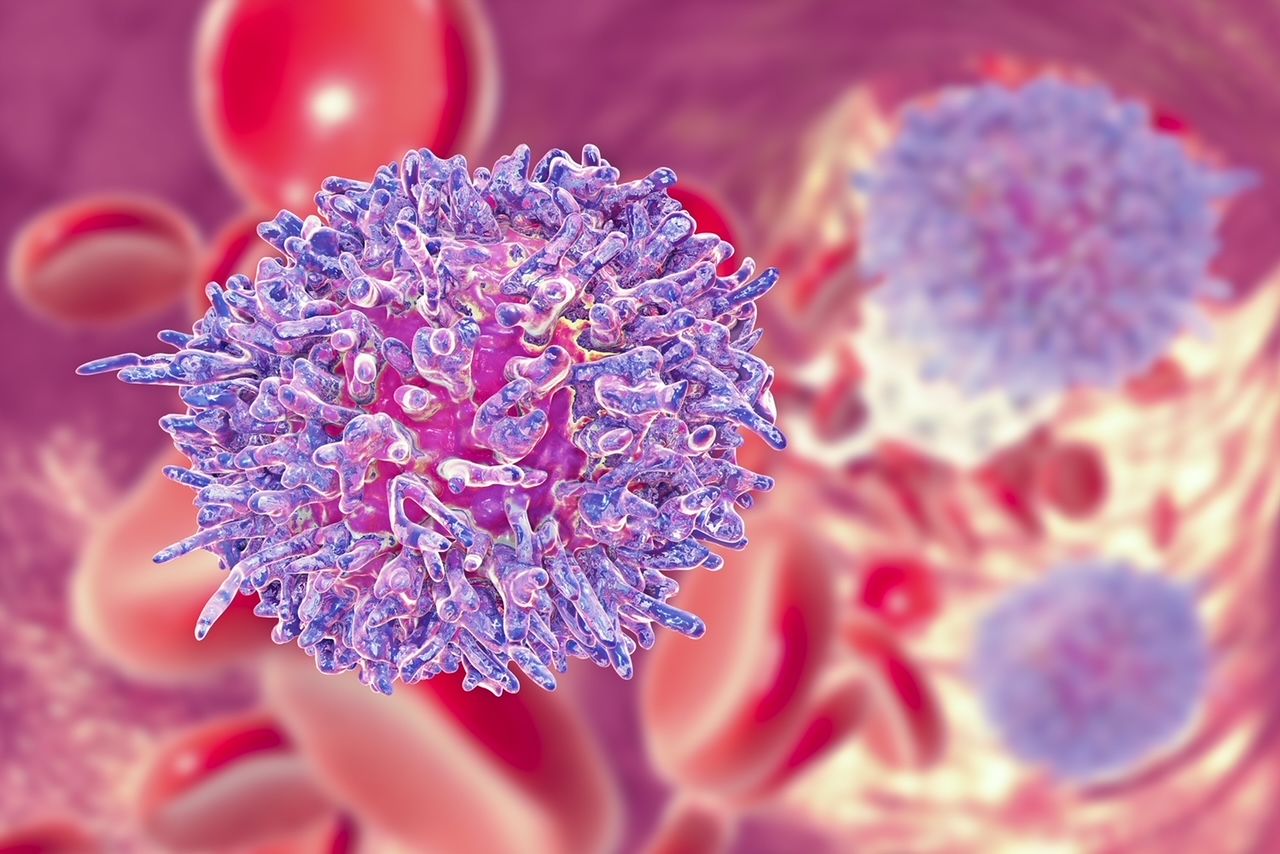Ibrutinib/Venetoclax May Decrease Development of Resistance Mutations in Patients With CLL
Findings from an analysis of the CAPTIVATE study imply that ibrutinib plus venetoclax may allow for effective subsequent retreatment with ibrutinib and/or venetoclax and enhance clinical benefit.

After frontline treatment with a fixed-duration of ibrutinib (Imbruvica) plus venetoclax (Venclexta), no resistance-associated mutations in BTK, PLCG2, or BCL2 were identified in patients with chronic lymphocytic leukemia (CLL) who had progressive disease, according to findings from the phase 2 CAPTIVATE study (NCT02910583) presented with the European Hematology Associate 2022 Congress.1
The findings signal that ibrutinib plus venetoclax may allow for effective subsequent retreatment with ibrutinib and/or venetoclax and enhance clinical benefit, according to the study investigators.
In a prior CAPTIVATE analyses, the combination of ibrutinib and venetoclax given in a fixed-duration regimen achieved deep, durable responses in patients with CLL and small lymphocytic lymphoma, including patients with high-risk features.2 It was also shown that ibrutinib/venetoclax led to a 1-year disease-free survival rate of 95% in patients with confirmed undetectable minimal residual disease.3
Due to the presence of resistance mutation at the time of progressive disease (PD) in many samples from patients treated with fixed-duration ibrutinib/venetoclax in the CAPTIVATE study, genomic risk features and prognostic mutation in CLL-related genes were assessed at baseline.
A total of 191 patients aged 70 years or younger with previously untreated CLL who completed fixed-duration ibrutinib/venetoclax were included. The patient samples were assessed for resistance mutations by targeted next-generation sequencing with a customized high-read-depth 100-gene panel for BTK, PLCG2, or BCL2 variants. Mutations in other genes of interested were assessed by NGS using the Personalis ACE panel in baseline PB samples.1
In terms of mutation in genes of interest assessed at baseline, investigators identified ATM in 37% of patients, SF3B1 in 27%, CHD2 in 10%, BRAF, POT1, XPO1, and MYD88 in 7% of patients each, and FBXW7 in 3% of patients with PD. In the non-PD group, ATM was found in 27% of patients. NOTCH1 was identified in 21%, and BIRC3, CHD2, and RPS15 were observed in 7% of patients each. Eighteen percent of patients had SF3B1 mutations. There were also mutations in BRAF, MYD88, and XPO1 identified in 6% of patients each. Five percent of patients had FBXW7 mutations in the non-PD arm.
Of the patients with genomic risk features and PD, 77% had unmutated immunoglobulin heavy chain gene(IGHV), 50% had del(13q), 30% had del(11q), 30% had complex karyotype, 23% had trisomy 12, 17% had del(17p), and 13% had a tp53 mutation. In the non-PD group. Unmutated IGHV was observed in 57% of patients, as was del(13q). Nineteen percent of patients had complex karyotype, 17% of patients had del(11q) and trisomy 12), 10% had del(17q), and 7% had a tp53 mutation.
Results show that of the 30 patients with CLL and PD, 73% had baseline mutation in genes of interest. Moreover, 90% of patients with PD had ≥ 1 baseline genomic risk feature. Overall, more baseline genomic risk features were observed in patients with PD compared with the non-PD group (P = 0.02).
The CAPTIVATE study is ongoing with 323 patients with treatment-naïve CLL divided in 5 cohorts based on whether they have minimal residual disease or are receiving fixed-duration ibrutinib plus venetoclax. The primary end point in the MRD cohort is 1-year DFS in patients with confirmed undetectable MRD (uMRD). The secondary end points being explored in this cohort included complete response rate (CRR), overall response rate (ORR), duration of response (DOR), MRD-negativity rate, tumor lysis syndrome rate (TLS), progression-free survival (PFS), overall survival (OS), and the percentage of patients with treatment-emergent adverse events (TEAEs).
The primary end point in the fixed-duration cohort is CRR. In this cohort, investigators are also evaluating ORR, DOR, MRD-negativity rate, PFS rate at 24 months, OS rate at 24 months, TLS risk reduction with 3-cylce ibrutinib lead-in, and the percentage of patients with TEAEs. Pharmacokinetics are being assessed in both cohorts as secondary end points.
Patients were eligible to enroll given they had a diagnosis of CLL/SLL according to 2008 International Workshop on Chronic Lymphocytic Leukemia diagnostic criteria, measurable disease by CT scan, and adequate hepatic, renal, and hematologic function.
Patients were also required to have adequate laboratory values defined as an absolute neutrophil count > 750/µL, platelet count > 30,000 /μL, and hemoglobin > 8.0 g/dL. Any patient who received prior treatment for CLL/SLL or who had a known allergy to xanthine oxidase inhibitors were excluded from the study. Patients who were at risk for TLS and had a known allergy to rasburicase were also excluded from the study.
REFERENCES:
1. Croner LJ, Allan JN, Jain N, et al. Absence OF BTK, BCL2, AND PLCG2 mutations in relapsing chronic lymphocytic leukemia (cll) after first-line treatment with fixed-duration ibrutinib (I) plus venetoclax (V). Presented at: 2022 EHA Congress; June 9-12, 2022; Vienna, Austria. Abstract P670.
2. Ghia P, Allan JN, Siddiqi T, et al. Fixed-duration (FD) first-line treatment (tx) with ibrutinib (I) plus venetoclax (V) for chronic lymphocytic leukemia (CLL)/small lymphocytic lymphoma (SLL): Primary analysis of the FD cohort of the phase 2 captivate study. J Clin Oncol. 2021; 39 (suppl 15):7501. doi: NCT02910583
3. Weirda WG, Allan JN, Siddiqi T, et al. Ibrutinib plus venetoclax for first-line treatment of chronic lymphocytic leukemia: primary analysis results from the minimal residual disease cohort of the randomized phase II CAPTIVATE study. J Clin Oncol. 2021;39 (34): 3853-3865. doi: 10.1200/JCO.21.00807
Selection of Next-Gen BTK in CLL Limited By Lack of Direct Comparison
February 4th 2025During a Case-Based Roundtable® event, Nakhle Saba, MD, and participants discussed the data supporting the 2 newer BTK inhibitor therapies acalabrutinib and zanubrutinib in patients with chronic lymphocytic leukemia who received 1 prior line of therapy in the second article of a 2-part series.
Read More